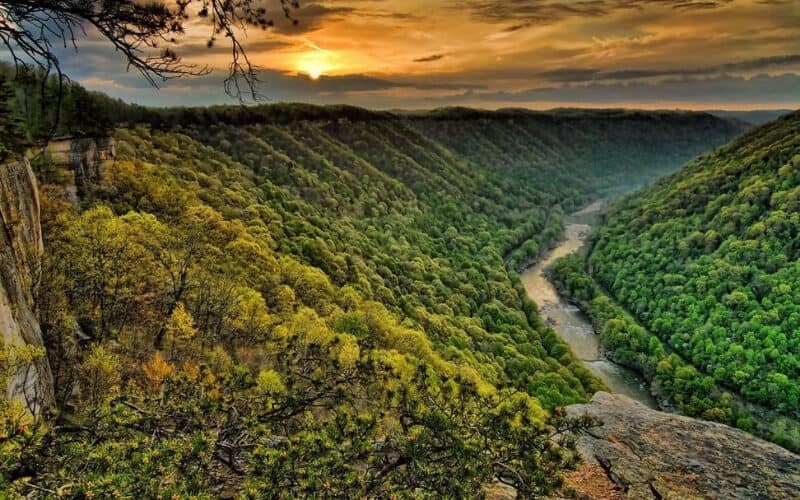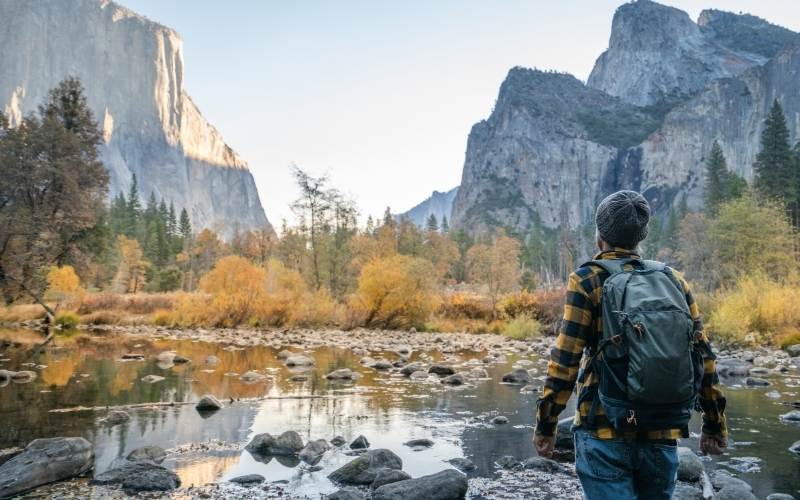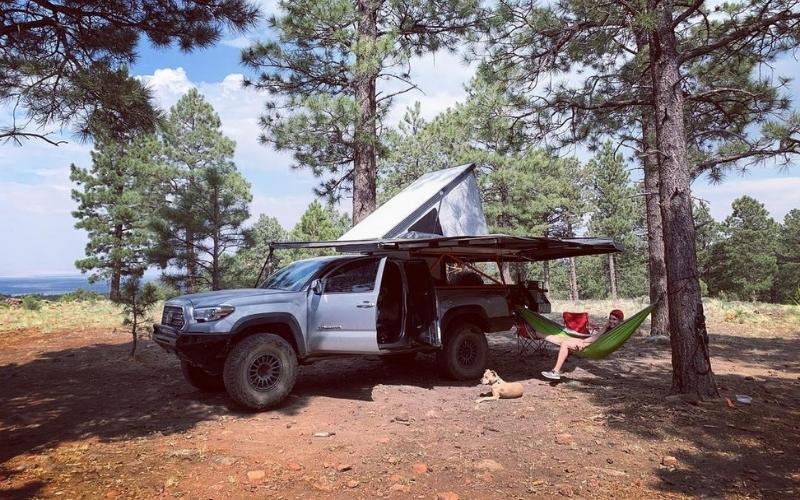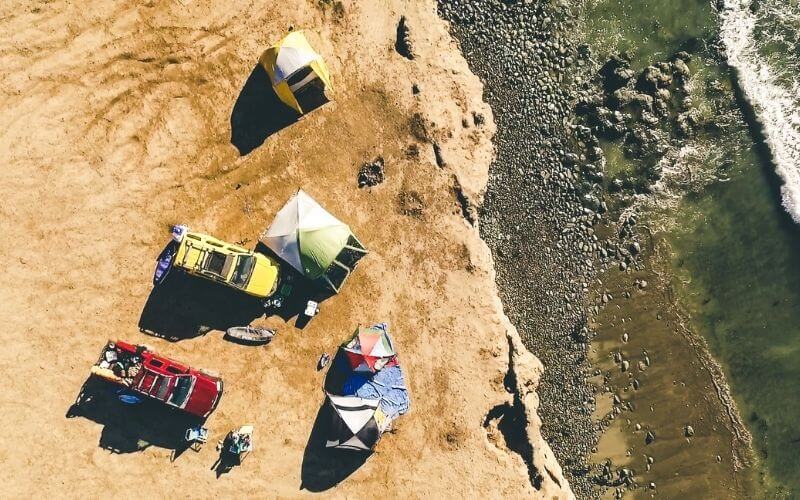If you ask a veteran RVer where they love to camp, their answer will more than likely be a national park.
They are famous for their fantastic scenery, diverse wildlife, and in-depth information regarding America’s rich history.
There’s over 400 amazing national parks in the country, and with that list growing every year it’s getting more difficult to narrow down which national parks are the best for RV camping. Especially since some, like Sequoia National Park, restrict vehicles longer than 22 feet.
In order to find the best ones, we first located national parks with RV accessibility. Then, we searched for parks with the best activities and highest rated campsites.
With these qualities in mind, we narrowed our list down to the top ten national parks to visit with your RV.
Each entry on this list will tell you which RV campground to stay at, as well as the top three things to do in each national park.
But before we get started, there’s a few things you should know. Here’s some tips for RV camping in America’s national parks.
National Park RV Camping Tips
Buy an Annual ‘America the Beautiful’ Pass
This annual pass gives you access to over 2,000 federal recreation areas, including national parks.
They cost $80, but pay for themselves if you plan on visiting a lot of federal land while you travel.
Seriously, I’ve saved a few hundred dollars (I’m a full-time traveler) by using the card this year. You can buy the pass online, or in person.
Reserve in Advance
National Parks are popular destinations for both domestic and international travelers.
If you plan on camping inside the park you need to make a reservation in advance, sometimes up to six months.
If you fail to do so, you may find yourself unable to camp inside, or even near, the park as spots fill up fast.
Pack it in, Pack it Out
As national parks continue to gain popularity the risk of polluting these beautiful landscapes rises as well.
Park staff strive to keep the park clean but, being understaffed, need all the help they can get.
It’s good practice to leave room in your RV for extra trash storage. If you take out all your trash and dump it at a designated receptacle outside the park you can help keep the park clean and lower their costs.
This allows them to use money on more important things like wildlife preservation.
Be Respectful of Wild Animals and Keep Your Distance
Don’t be the person running up to a grizzly bear for a picture (I literally saw someone do this at Yellowstone).
Every park recommends a distance you should stay from a given animal, but keeping yourself at least a hundred yards away is a good rule of thumb.
Animals are wild and unpredictable. Getting too close can cause injury to you or the animal.
Read the Rules and Regulations
Every National Park has different rules and regulations. For instance, some may allow you to have fires while others may not, many prohibit pets on trails, and most enforce a ban on drones.
By learning the rules and regulations unique to the park you’re visiting you can avoid pesky fines and awkward encounters with park rangers.
Visit the National Park Service website to find the rules and regulations for your campground.
1. Yellowstone National Park
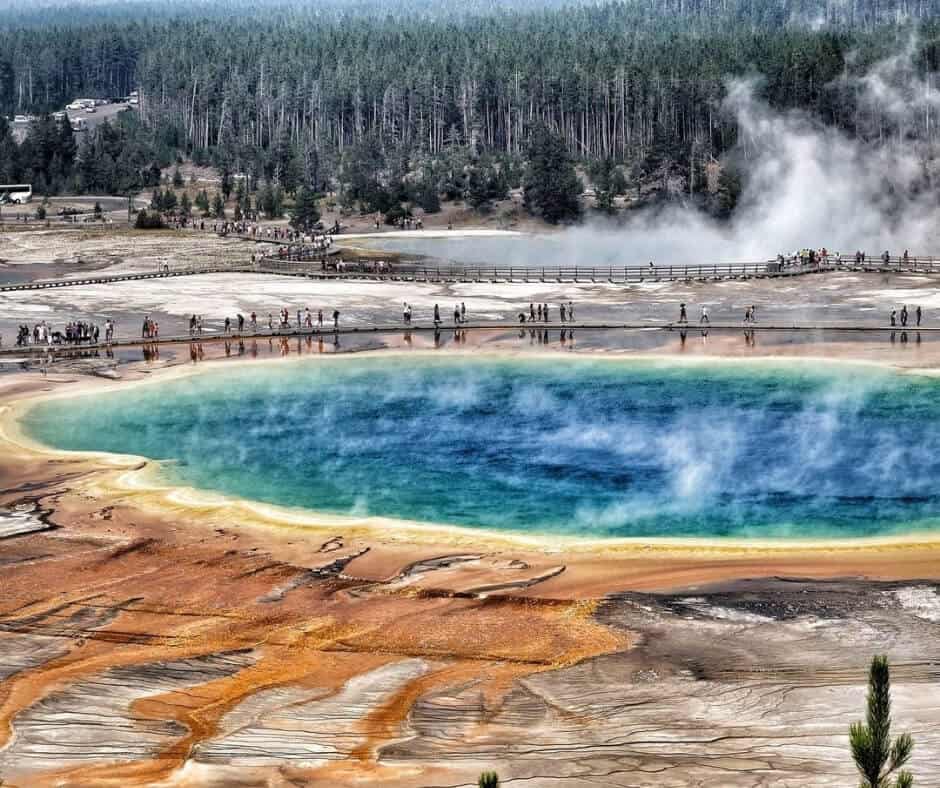
This national park is my favorite. It’s larger than Delaware and Rhode Island combined, has a higher concentration of mammals than anywhere else in the lower 48, and contains more than half of the world’s hydrothermal features (geysers, hot springs, etc.). You could live here for a year and still not see everything.
Why It’s The Best National Park for RVers
This national park is an RVers dream. The park’s immaculate roadways and helpful signage make navigating it easy.
While some of the more popular sights, like Grand Prismatic Spring, may be too congested for RV parking, the rest of the trailheads and less popular sights have more than adequate RV parking.
Need a place to RV camp? No problem! Yellowstone has 12 RV friendly campsites—more than most.
Since you don’t have to leave the park to camp you can witness wildlife, like Bison, grazing in nearby fields, or even gaze at Yellowstone Lake from the window of your RV.
Where to Stay?
Bridge Bay Campground
Why you’ll love it?
- Bridge Bay overlooks beautiful Yellowstone Lake. That, along with it’s central position in the park, makes it the best RV Park in Yellowstone.
Basic Information:
-
Cost: $27/night
-
Number of sites: 85
-
Showers: No
-
Toilets: Flush
-
Generators allowed: Yes
-
Dump Station: Yes
-
Hookups: None
-
Max RV length: 40 feet
What to Do?
-
Driving Wildlife Tour—I’m probably not the first to say that Yellowstone is the African safari of the Americas. You can see bison, bears, elk, and wolves from the comfort of your driver’s seat.
-
Hot Springs and Geysers and fumaroles, oh my!—Go check out the park’s unique hydrothermal systems like Old Faithful, Grand Prismatic Springs, and more.
-
See the ‘Grand Canyon of Yellowstone’—A giant canyon rivaling the Grand Canyon in beauty and size.
2. Grand Teton National Park
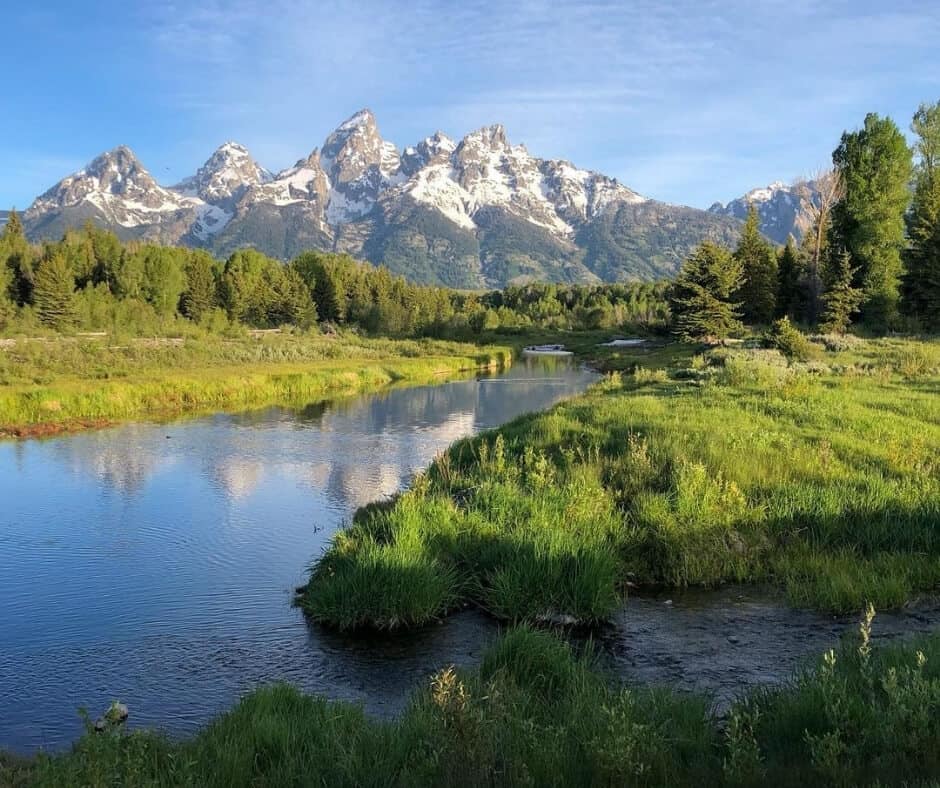
Grand Teton National Park contains one of the youngest mountain ranges in the world.
These stony behemoths fill the Wyoming horizon in dramatic fashion. In their shadow, a diverse animal and plant population thrive.
It’s a region that boasts a cultural history dating back 11,000 years to the Paleo Indians. Do you need any other reason to visit this amazing national park?
Why It’s The Best National Park for RVers
You got an RV to get closer to nature and enjoy more outdoor activities. There’s no better place for that than Grand Teton National Park.
You can go kayaking, biking, fishing, hiking, and more! And bringing your RV means you get to enjoy these activities for as long as you want by staying at one of the 3 RV friendly campgrounds in the park.
Where to Stay?
Signal Mountain Campground
Why you’ll love it?
- This campground has exceptional amenities, including laundry, restaurants, and a marina. It’s a short walk to nearby Jackson Lake, and offers incredible views of Signal Mountain.
Basic Information:
-
Cost: $27/night
-
Number of sites: 81
-
Showers: Yes
-
Toilets: Flush
-
Generators allowed: Yes
-
Dump Station: Yes
-
Hookups: 30/50 Amp Electric
-
Max RV length: 30 feet
What to Do?
-
Jenny Lake—Fish, paddle, swim, or hike around this giant, picturesque lake.
-
Mormon Historic District—Get a sunrise picture of a homestead from 1890. There’s 27 in total.
-
Drive the 42-mile Scenic Road—You can spend the day driving across the park. Keep your eye out for it’s diverse wildlife and dramatic scenery.
3. Grand Canyon National Park
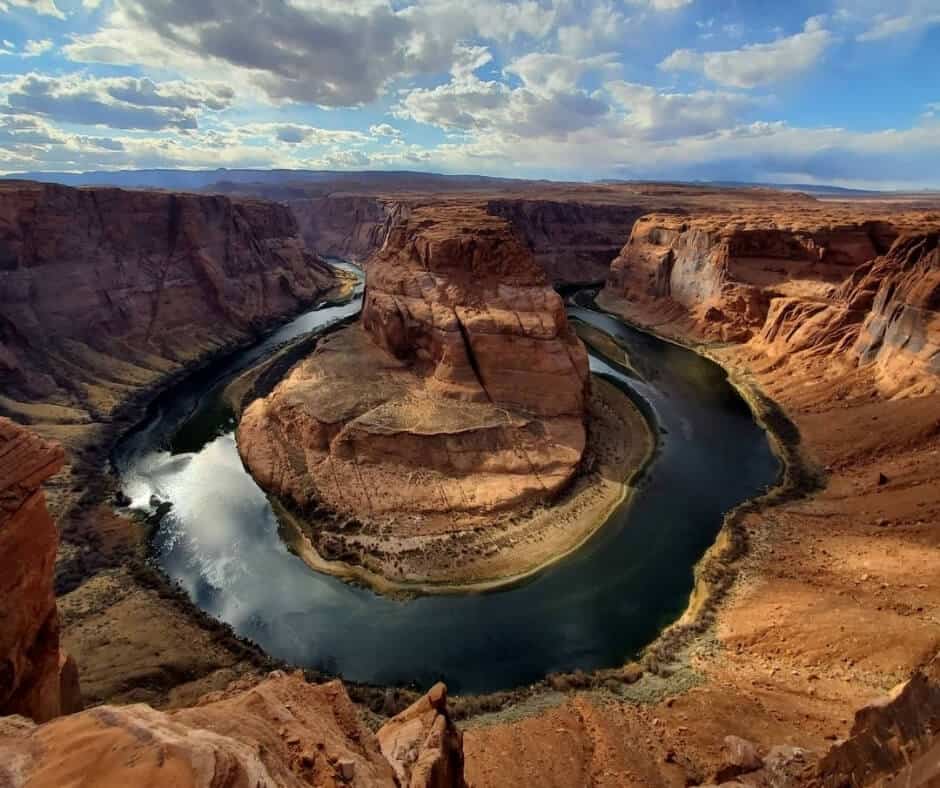
The Grand Canyon is the largest canyon on the planet, and stretches over 277 miles. It’s the most visited national park for a reason.
Red-hued walls shelter some of the most unique wildlife on the planet. They offer endless photo opportunities. Go. Now.
Why It’s The Best National Park for RVers
This is one of the largest national parks in the U.S., which means it requires a lot of driving—perfect for RVers! Furthermore, while other campers will need to brave the extreme conditions in their tents, you can avoid malleable weather from the comfort of your RV.
Along the way there’s plenty of dump stations, RV parks with full hook-ups, and vehicle turnouts so you can take in the incredible views with ease.
Where to Stay?
Trailer Village RV Park
Why you’ll love it?
- It’s the only in-park campground with full hookups, and it’s within walking distance of Grand Canyon’s South Rim. If you’re looking for comfort AND adventure this is the campground for you.
Basic Information:
-
Cost: Starting at $56/night
-
Number of sites: NA
-
Showers: Yes
-
Toilets: Flush
-
Generators allowed: No
-
Dump Station: Yes
-
Hookups: Full Hookups
-
Max RV length: 50 feet
What to Do?
-
Mather Point—Short hike to one of the best views in Grand Canyon’s South Rim.
-
South Rim Trail—Hike along the South Rim to take in the dramatic scenery and diverse wildlife.
-
Grand Canyon Village—Tour this small town to see some of the area’s historic sites, shopping, and delicious restaurants.
4. Crater Lake National Park
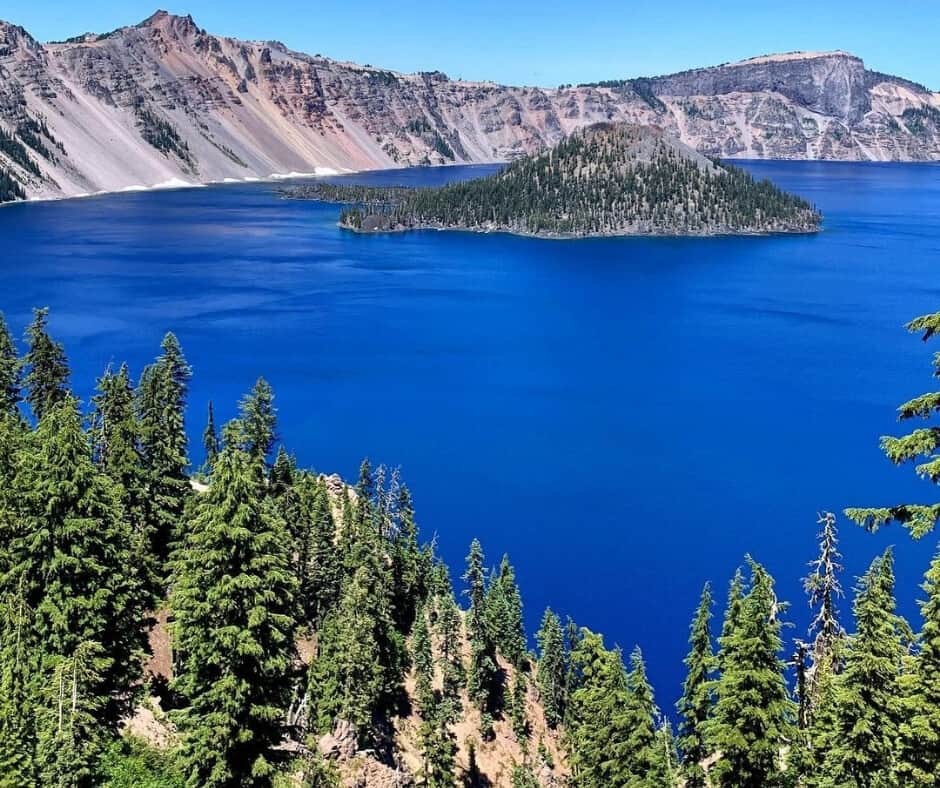
You’ll find the deepest and clearest lake in America at this national park.
Fed by rain water and snow melt, this caldera offers impressive views and over 30 pull-outs to see them.
It’s one of the most driver friendly national parks on the list for this reason.
Why It’s The Best National Park for RVers
The biggest draw for RVs to this national park is it’s road. It literally surrounds the caldera in one gigantic loop.
Along the way, 30 pull-outs make it easy to park your RV, take pictures, and absorb the beautiful nature that defines the park.
Lastly, it’s massive visitor center provides RV friendly parking, as well as a beautiful overlooks of the entire park.
Where to Stay?
Union Creek Campground
Why you’ll love it?
- This campground offers a less crowded camping experience due to it’s spacing and forested surroundings. It also sits near The Rogue River, offering beautiful trails along the water’s edge.
Basic Information:
-
Cost: Starting at $22/night
-
Number of sites: 73
-
Showers: Yes
-
Toilets: Vault
-
Generators allowed: Yes
-
Dump Station: Yes
-
Hookups: 30/50 Amp Electric
-
Max RV length: 40 feet
What to Do?
-
Scenic Rim Drive—A 33-mile loop that offers 30 pull-outs with incredible views of Crater Lake.
-
Cleetwood Cove Trail—Bring a swimsuit and cliff dive at this relaxing spot.
-
Plaikni Falls—Two-mile hike to a beautiful waterfall featuring gorgeous plant life.
5. Badlands National Park
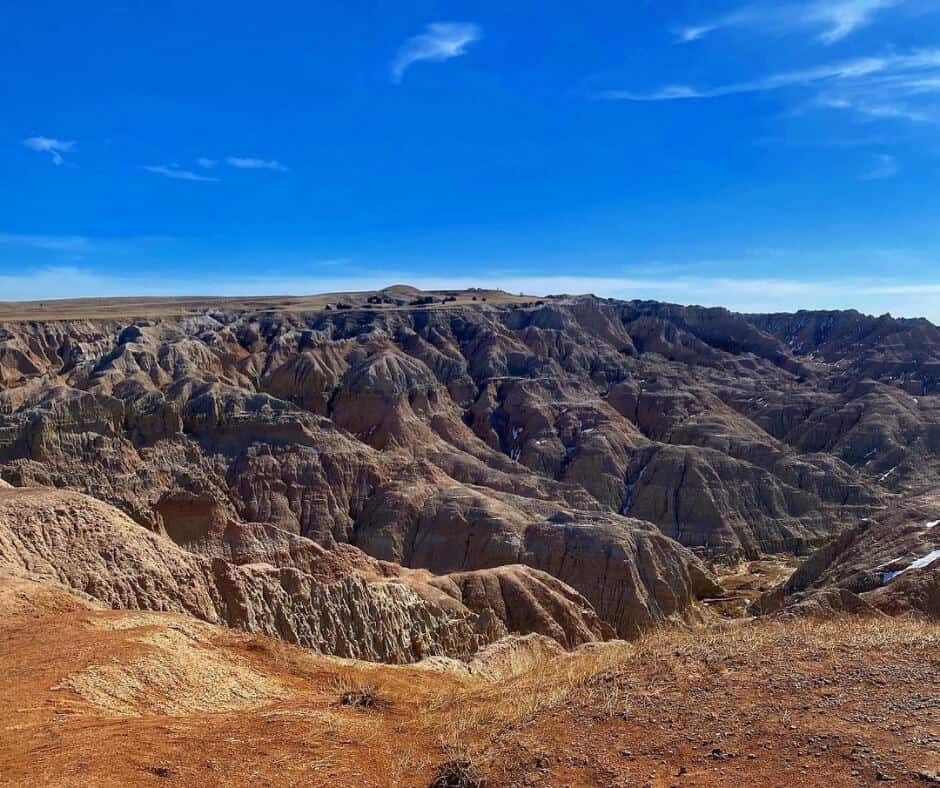
This arid landscape is millions of years old. Among it’s unique, red, orange, and beige rock formations lie fossils from ancient organisms.
You might even find one, as a young visitor in 2010 did, when she uncovered a saber tooth tiger skull.
Why It’s The Best National Park for RVers
This is another national park that caters to road warriors of the RV world. It’s enormous—perfect for driving—with tons of RV friendly pull-outs.
It features a number of RV campsites both inside and near the park. At night you can walk outside your rig and gaze at some of the clearest night skies in the world.
Seriously, millions of stars. If you bought your RV to be closer to the universe, this is the best national park for you.
Where to Stay?
Badlands and White River KOA
Why you’ll love it?
- I’ve always called KOA the Hilton of RV Parks—and for good reason. This one offers exceptional amenities including laundry, a mini golf course, and a doggie day care. It even offers great views of the Badlands.
Basic Information:
-
Cost: Starting at $42/night
-
Number of sites: 76
-
Showers: Yes
-
Toilets: Flush
-
Generators allowed: No
-
Dump Station: Yes
-
Hookups: Full-Hookups
-
Max RV length: 120 feet
What to Do?
-
Pinnacles Overlook—One of the best views in Badlands National Park, and a popular spot for Bighorn Sheep to gather.
-
Panorama Viewpoint—Short boardwalk trail that offers impressive views, especially at sunset
-
The Castle Trail—Scenic 10-mile trail the cuts through the heart of the Badlands.
6. Everglades National Park
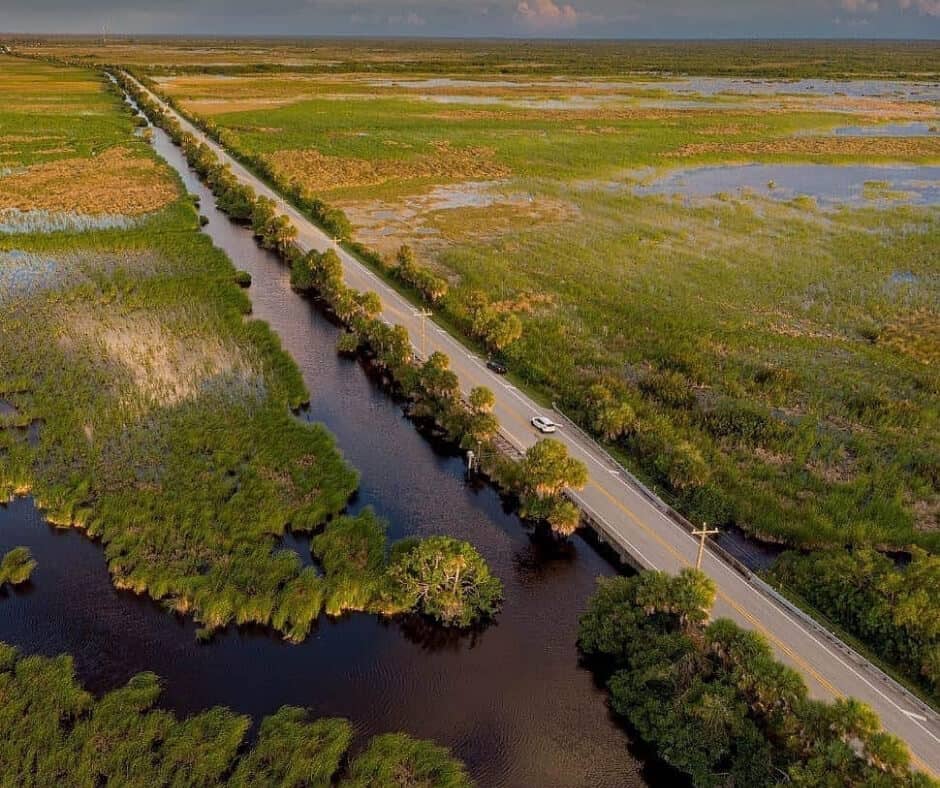
This is the largest wetlands national park in the country. It’s home to a variety of rare species like the American Alligator, Florida Panther, and West Indian Manatee.
It’s subtropical landscape cannot be found anywhere else in the country.
Why It’s The Best National Park for RVers
The year-round tropical weather makes this a must-see RV destination. You can travel here and stay at one of the phenomenal RV campsites.
They offer full hook-ups, dump stations, and propane—everything you need to ‘rough it’ in the Everglades.
After you’re settled, drive the park’s easily navigable roads and head to a boardwalk trail.
They’re an easy way to see some of the rarest species in the U.S., including manatee and panther.
Where to Stay?
Long Pine Key Campground
Why you’ll love it?
- It’s just 7 miles from the main entrance to the park. The campground sits in a subtropical forest overlooking the Everglades, giving you both privacy and incredible views.
Basic Information:
-
Cost: Starting at $16/night
-
Number of sites: 108
-
Showers: Yes
-
Toilets: Flush
-
Generators allowed: Yes
-
Dump Station: Yes
-
Hookups: None
-
Max RV length: 35 feet
What to Do?
-
Anhinga Trail—Short, loop trail on a raised boardwalk offers intimate views of wildlife, including: gators, colorful birds, and plant species.
-
Take an Airboat Ride—See the everglades from the water by taking an airboat down it’s riverways. It’ll give you a better view of aquatic life in the Everglades.
-
Bike on Shark Valley Trail—This 15-mile trail will take you through ‘The True Everglades’.
7. Great Smoky National Park
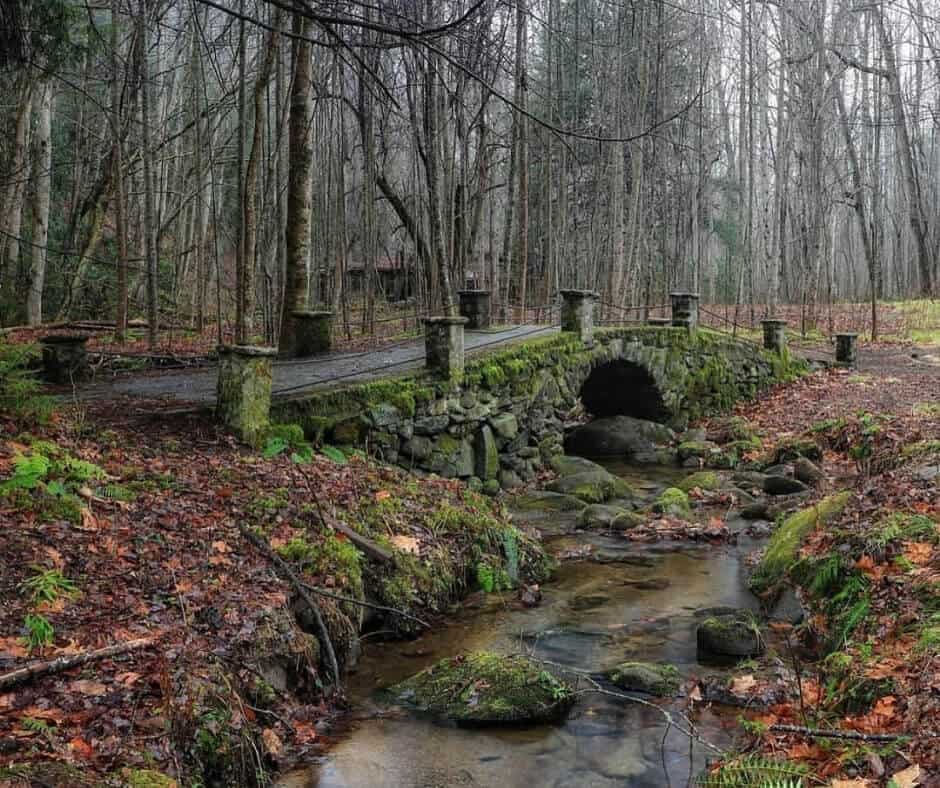
This is the national park with the most biodiversity in the U.S. This expansive list of species is nestled in one of the oldest mountain ranges in the world.
The Smoky Mountains are almost 300 million years old, but don’t worry, their forest covered facades aged like a fine wine. Not sold? Well, there’s no entrance fee to get in—It’s free!
Why It’s The Best National Park for RVers
Great Smoky National Park is famous for it’s year-round scenic drives. And what better way to experience them than from the seat of your RV.
In the spring, wildflowers cover it’s mountainsides in colorful mosaics, while the fall ushers in purple and golden hued leaves.
Besides that, the park offers tons of the outdoor activities sought out by RV owners, and campsites for them to stay at while they do them.
Where to Stay?
Cades Cove Campground
Why you’ll love it?
- It’s nestled in a beautiful part of the Great Smoky Mountains National Park. You’ll find old barns, churches, and homesteads set in picturesque prairies and inhabited by wildlife, like the white-tail deer.
Basic Information:
-
Cost: Starting at $25/night
-
Number of sites: 162
-
Showers: No
-
Toilets: Flush
-
Generators allowed: Yes
-
Dump Station: Yes
-
Hookups: 30/50 Amp Electric
-
Max RV length: 45 feet
What to Do?
-
Clingman’s Dome—This is the highest point in the Great Smoky Mountains, and gives you incredible views of the area.
-
Drive Newfound Gap—Marvel at the wildflowers in the spring, or autumn leaves in the fall from this scenic drive.
-
Waterfalls—Hike to one of it’s 100 waterfalls. Abrams, Laurel, and Grotto are some of the more popular ones.
8. Yosemite National Park
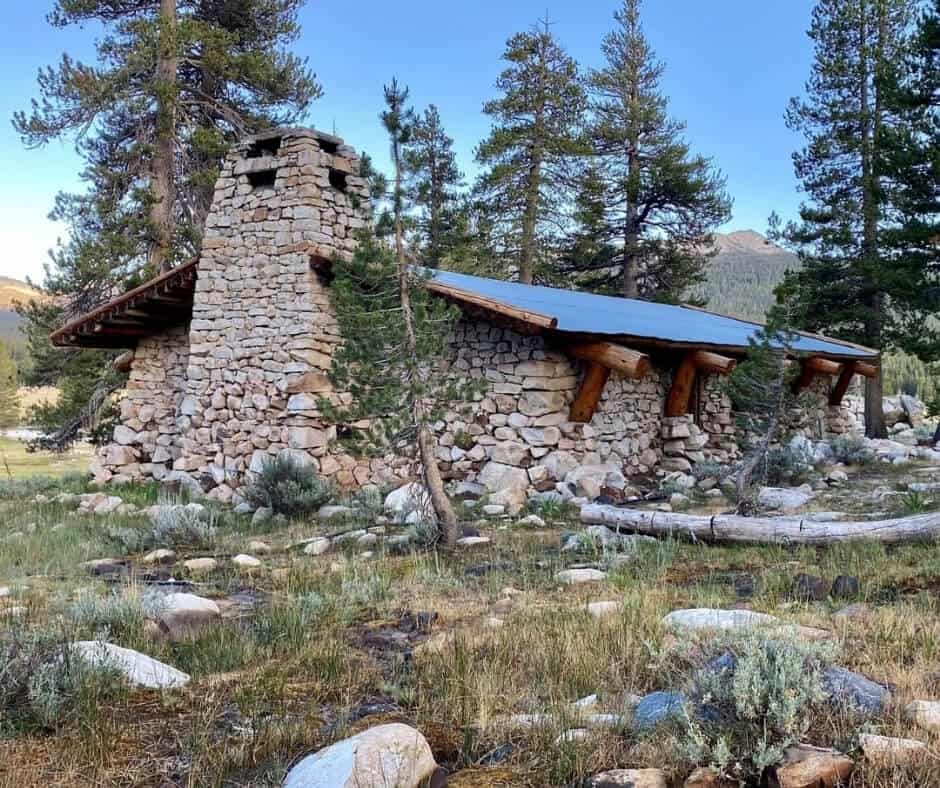
Famous for it’s enormous granite cliff faces, this national park is a hiker and rock-climbers paradise.
It offers tons of trails for all experience levels and features one of the tallest waterfalls in the world. Book six months in advance, camping sells out fast!
Why It’s The Best National Park for RVers
RV campers looking for a more natural experience will love this park. It offers ten, RV friendly campsites, none of which offer hook-ups.
So, you can finally disconnect from your electronic devices and enjoy nature without feeling guilty.
After you park your RV, take the Yosemite Valley Shuttle to explore the national park. It’s the quickest and easiest way to move from the various trailheads and wildlife spots.
Where to Stay?
Upper Pines Campground
Why you’ll love it?
- The campground sits near Merced River among a beautiful pine forest. You’ll be close to all the best sights in the park, and within walking distance of Curry Village. It’s less than a mile to get to the small shopping area which offers restaurants, gift shops, and general store.
Basic Information:
-
Cost: Starting at $26/night
-
Number of sites: 238
-
Showers: Yes
-
Toilets: Flush
-
Generators allowed: Yes
-
Dump Station: Yes
-
Hookups: None
-
Max RV length: 35 feet
What to Do?
-
Half Dome Day Hike—One of the best trails I’ve ever hiked. A word to the wary: it’s an intermediate level 16-mile hike. It won’t be easy, but it offers the best view in the park.
-
Tunnel View Overlook—The easiest overlook to visit, and one of the most breathtaking views of Yosemite Valley.
-
Mist Trail—this popular hike takes you up 600-feet of granite stairs to the top of Vernal and Nevada Falls. A difficult hike, but well worth it.
9. Rocky Mountain National Park
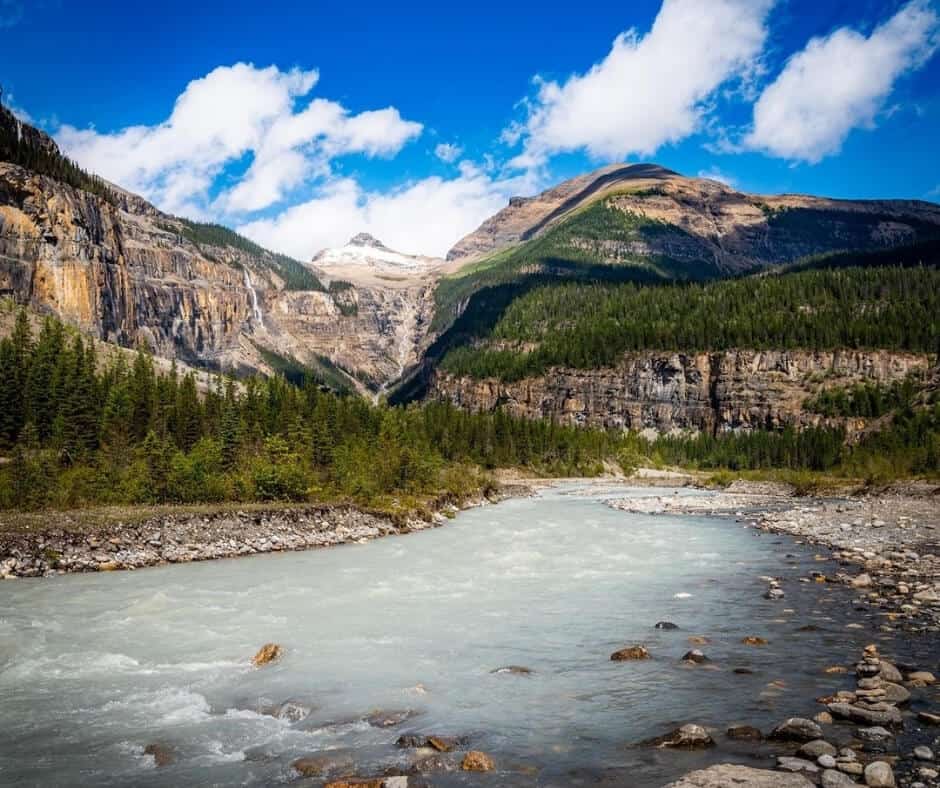
This amazing national park is one of the highest in the nation at over 14,000 feet.
It’s more than just rugged mountains though, you’ll also see alpine lakes, enormous pine forests, and diverse wildlife. It offers fun in both the summer and the winter!
Why It’s The Best National Park for RVers
This national park offers summer and winter fun for RV owners. It has plenty of National Forest and public land which means you can camp for free.
If you’re not comfortable with boondocking on private land then you can stay at a variety of other paid sites. They offer full hook-ups, dump stations, and more.
Finally, Trail Ridge Road is perfect for most RV sizes and offers tons of beautiful scenery with overlook pull-outs to enjoy them.
Where to Stay?
Esters Park KOA Campground
Why you’ll love it?
- When it comes to RV camping other RV parks can’t compete. KOAs offer an array of unique amenities and great service. This one in particular is fantastic because it’s located in Estes Park, smack dab in the middle of Rocky Mountains National Park. You get all the benefits of a small town with the adventure of a pristine wilderness.
Basic Information:
-
Cost: Starting at $75/night
-
Number of sites: 238
-
Showers: Yes
-
Toilets: Flush
-
Generators allowed: No
-
Dump Station: Yes
-
Hookups: Full Hook-ups
-
Max RV length: 40 feet
What to Do?
-
Emerald Lake Trail—Incredible hike to an alpine lake with a bluish green hue. Great at sunset!
-
Alberta Falls—This 1.2-mile hike takes you to a picturesque waterfall. A good hike for seeing Rocky Mountain wildlife.
-
Trail Ridge Road—drive the tallest highway in the United States. It’s a scenic drive that offers incredible views.
10. Glacier National Park
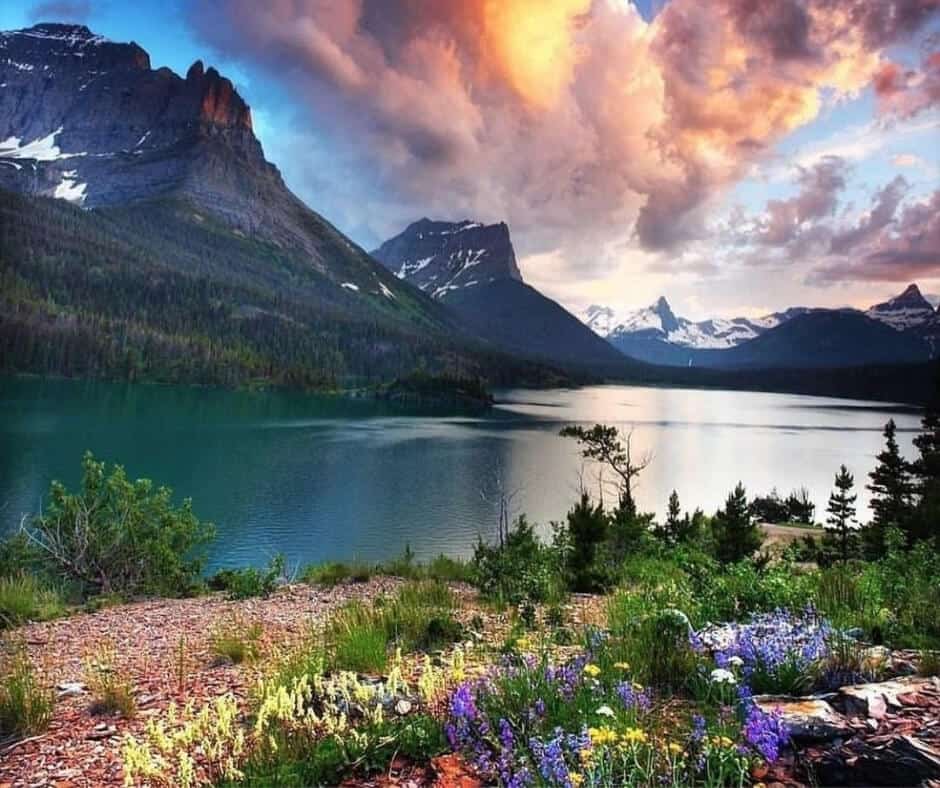
Going-to-the-Sun Road is one of the most beautiful drives in the U.S. It will take you through some of the most incredible mountains in the country.
This landscape, carved by glaciers, provides a home for an innumerable animals and plants.
Why It’s The Best National Park for RVers
While, there are length restrictions for Going-to-the-Sun Road you can still enjoy much of what the national park has to offer from below, including the gorgeous McDonald’s Lake.
Or unhitch you tow vehicle and take it up to the top of the park. You’ll find turn-outs offering breathtaking views, and one of the most beautiful drives in the country.
Finally, this national park is great for RVers because of it’s many campground options and various outdoor activities, like fishing, kayaking, and biking.
Where to Stay?
Many Glaciers Campground
Why you’ll love it?
- It’s the smallest and most private RV camping option on our list. It puts you at the top of Going-to-the-Sun Road which means you’ll wake up to incredible views of Glacier National Park.
Basic Information:
-
Cost: Starting at $23/night
-
Number of sites: 13
-
Showers: No
-
Toilets: Flush
-
Generators allowed: Yes
-
Dump Station: Yes
-
Hookups: Full Hook-ups
-
Max RV length: 35 feet
What to Do?
-
Lake McDonald – Clear, reflective glacial lake with multi-colored river rocks along it’s shorelines. Perfect for a picture!
-
Logan’s Pass – Stay in your car, and gaze around at the mountainous scenery, or hike the easy trail nearby to get a more intimate view of nature.
-
Going-to-the-Sun Road – One of the best scenic drives in the U.S. You’ll see some of the most beautiful views in the country.
That’s it: the top ten best national parks for RV camping. Which ones have you visited? Tell us about your favorite National Park camping experience below.

